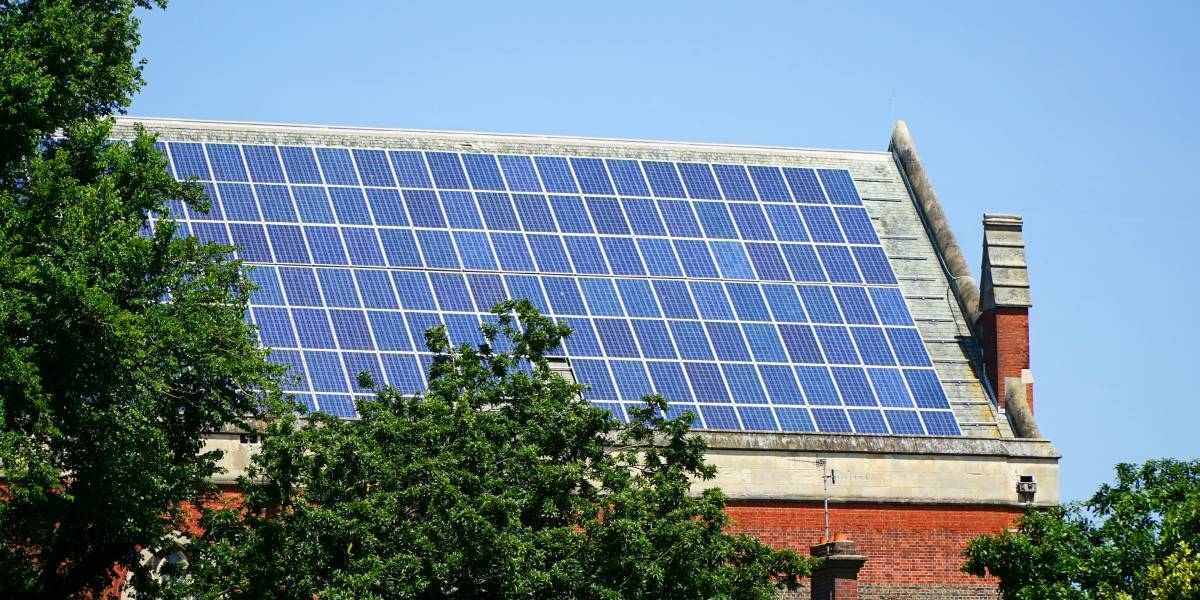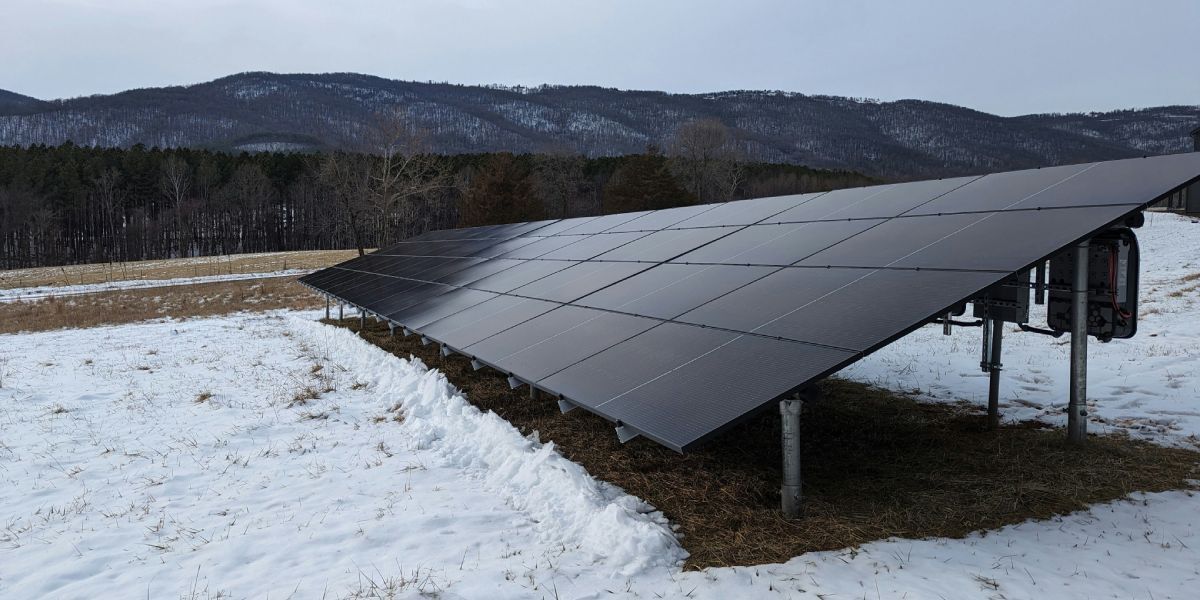Ground Mount vs Roof Mount Solar: Which is Right for You?
Quick Summary: Ground Mount vs Roof Mount Solar Panels
- Ground mounted solar panels are easier to permit, clean, and maintain. But they cost more to install and take up more space on your property.
- Roof mounts are the default choice, as they are cheaper, and take advantage of your rooftop's architecture as a foundation for your solar panel system.
Introduction to Ground Mounts and Roof Mounts
When you go solar, you'll need to build a solar panel mount to secure your solar panels in place. Solar mounts (also called "solar racking systems") typically consist of metal beams, anchors, and screws to create a solid foundation for your solar panels.
Solar mounts fall into two main categories: roof mounts and ground mounts. Rooftop solar mounts make use of your existing architecture to support the weight of your solar panels on your roof. A ground mount is a stand-alone structure built on your property to hold your panels in place.
In short: ground mounts are easier to access and maintain, but they cost more and require more space to build. For that reason, roof mounts are the "default" pick: they cost less to install, and for many people, the rooftop is the only available location to install a solar panel system.
Advantages of Roof Mounted Solar Panels

Roof mounts account for the majority of our solar kit sales at SolarTown. There are a few simple reasons you might opt for a roof-mounted system.
Space Efficiency
Many homeowners simply don't have enough room on their property to build a dedicated ground mount structure for their system. For those folks, rooftop solar is the only option. Putting panels on your roof keeps them out of sight and out of mind, so you can make better use of the space you have available to you.
Lower Costs
Rooftop solar mounts use fewer racking materials, since they are able to take advantage of your roof's existing support beams to serve as a solid foundation for your panels. As a result, rooftop systems are typically cheaper and simpler to install.
Southern Exposure
In some cases, your rooftop may already be configured well enough that building a dedicated mount for your panels simply isn't necessary. Solar panels are most efficient when they face directly into the sun. For those of us in the USA, that means South-facing panels will perform the best, as they are exposed to the most sunlight over the course of the day.
One of the selling points of ground mounts is being able to maximize energy output by optimizing the facing and tilt angle of your panels. But a nice South-facing roof (clear of any obstacles) is already perfectly suited for solar - making the costs spent on building a ground mount mostly redundant. We always evaluate our customers' roof layout to determine whether the conditions are ideal for solar.
Drawbacks of Roof Mounted Solar Panels
While roof-mounted solar is the most popular option, there are some drawbacks to consider:
Fixed Alignment
Not all rooftops provide a Southern face with enough space to build a solar panel system. In a pinch, East- or West-facing roofs can work as well, with a slightly oversized array to make up for the efficiency loss from sub-optimal orientation.
Build Obstructions
When designing a rooftop array, you'll need to account for vents, skylights, A/C units, and other obstructions when designing your system. It's typically better to layout panels in a clean grid, but separate sections can be built and wired together if necessary to account for limitations with roof layouts. Consult with your solar designer to ensure your system layout meets any setbacks or clearances required by local permitting regulations.
Rooftop Repairs / Replacement
Old rooftops may not be suitable for solar if they come with damage, leaks, or structural integrity concerns. It is strongly encouraged to evaluate the longevity and structural integrity of your roof, and complete any needed renovations before committing to installing rooftop solar. Ultimately, you want to avoid the headache of uninstalling and re-installing your system down the line just to facilitate roof repairs.
Limited Access
The key functional drawback of rooftop solar panels is that they are harder to clean and maintain. If you want to wipe down your array or replace a faulty panel, you'll probably need to break out the ladder and climb on your roof. Of course, you can buy long-handled tools to make things like snow removal a bit easier. But overall, roof-mounted systems are less convenient to access for maintenance and repairs.
Advantages of Ground Mounted Solar Panels

Ground mounts are a bit of a luxury. Assuming you have the space to build and the budget to spend, ground-mounted solar panels offer several advantages over roof-mounted systems.
Easy Access
The main advantage of ground-mount solar is easy access to your panels for cleaning and maintenance. While your solar panel system doesn't need constant oversight, it's healthy to clear off debris and wipe down dust a few times a year, with snow removal in the winter months if necessary. Ground mounts simply make this process a lot easier. Roof mounts are harder to access, which can be a real deterrent to providing regular upkeep to your system
Optimize Energy Output
Ground-mounted solar systems offer full control over the direction and angle of your panels, allowing them to achieve greater efficiency compared to rooftop installations. This can result in fewer panels needed to achieve the same energy output as a larger rooftop system. However, the costs saved on panels are offset by higher racking material costs, especially for small residential-scale systems. The payoff for improved efficiency is really only felt in large-scale, commercial ground mount systems.
Future-Proofing
Ground mounts also provide more flexibility around future home improvement projects. For example, if you need to make roof repairs or replacements in the future, you won't need to disassemble your solar panel system to do so.
It should also be easier to expand the solar array if you need more energy production capacity in the future. Rooftop systems are often confined to a limited space, and expanding the system can involve building new sub-arrays on different faces of the roof, which can limit the overall system output. In contrast, ground mounted arrays can often be expanded with uniform facing and wiring, resulting in a system that performs much better post-expansion.
Drawbacks of Ground Mounted Solar Panels
Higher Installation Costs
Ground mounts often come with a higher up-front installation cost due to the need for more racking materials. You'll also be digging holes to create concrete footings for the racking material, which will likely require the rental of specialized equipment for the duration of the project.
Space Requirements
Solar panels take up a lot of space. At roughly 6.5 feet by 3 feet per panel, a 20-panel array would take up 390 square feet of space on your property. Space is a limiting factor in designing your system, and for many homeowners, roof-mounted panels are the only viable option. But if you have room to accommodate a dedicated ground mount, the improved efficiency and convenience can be well worth it.
Wildcard: Permitting
We labelled this a wildcard because it can go either way depending on the rules enforced by your local permitting office. Some jurisdictions may be more strict about rooftop inspection standards, while others may require extra paperwork for ground mounts because it involves building a new structure on your property. Whether you opt for a ground mount or a roof mount, be sure to check in on the permitting process early to make sure your plans don't conflict with any codes or regulations.
Ground vs. Roof Mounts: Which to Choose?
To sum it up: ground mounts are easier to maintain, repair, and expand in the future. It's a great option if you have the space to build and the budget to cover higher up-front installation costs.
Roof mounts save space and cut down on installation costs by taking advantage of existing infrastructure to mount your solar panels. They are a great option for south-facing rooftops with few obstacles. It's also the default choice if space is a limiting factor, with the option to scale up your system size to offset any inefficiencies from West or East-facing panels.
Interested in learning more about going solar? Reach out to one of our solar designers for a free energy analysis and quote for a complete solar kit built to suit your energy needs.
